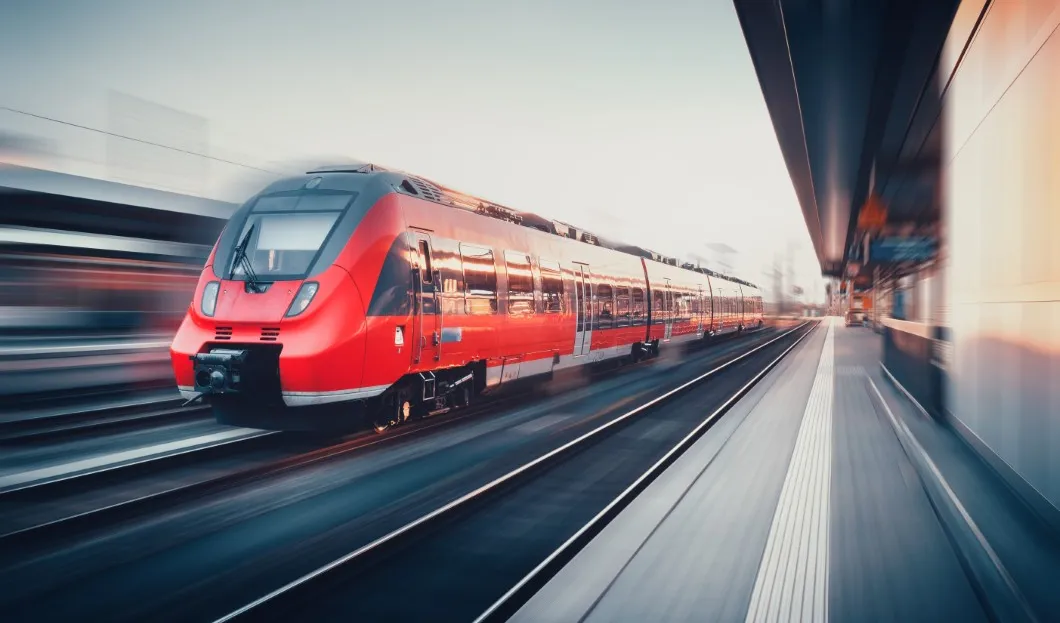
Landscapes passing by through the window, ample space, limited queues, and easily accessible starting points: train travel across Europe stands out as an attractive means of transport with several advantages for those who must move around different cities, either within the same country or across borders.
The big turning point is the use of time. For example, train travel does not require as much planning and waiting time as traveling by air, among other things. It’s safe and ecologically sustainable, with the lowest energy consumption compared to airplanes, buses, and cars.
In addition, trains depart and arrive at stations that are usually located within the city, making them easy to access by subway or buses. Besides, many stations offer night trains where you can spend the night and avoid accommodation expenses.
Planning or improvisation?
When traveling across Europe by train, for those who plan a few trips and have scheduled the exact dates on which they will move from one place to another, it is convenient to buy a train ticket; that is, buying a point-to-point ticket. This is how you pay only for what you use. On top of it, if you purchase the ticket in advance, the prices are much lower. There are companies that allow reserving up to 6 months in advance; while most are up to 3 months, and some just offer 2 months.
On the other hand, there is the rail pass, which allows unlimited travel within a country or – depending on the type of pass – across countries. It is the ideal option for those that enjoy the freedom or are making a long trip, visiting several countries and, above all, if the route is planned on the fly. For those who have not used a pass before, it is important to keep in mind that, in addition to the purchased pass, it is necessary to make a seat reservation.

Types of passes
First of all, it is necessary to decide which countries will be visited and the number of travel days. The Eurail Global Pass, for example, covers up to 31 countries (works for both short and long trips) and in 2019, it added new countries to the list (Great Britain, Lithuania, and Macedonia). On the other hand, the Eurail One Country Pass, as the name implies, can only be used in one country.
Continuous or flexible? The first pass implies the consecutive days that the pass can be used from the moment it is activated, continuously. If you buy a 1-month continuous pass, you can use it every day of that month.
Meanwhile, the flexible pass or “Flexipass” gives you a number of travel days that you can use for the duration of the pass. For example: if you buy a 10-day pass within two months, it means that from the moment you activate the pass, you will have two months to use those 10 days of travel. On that same day of travel, you can take all the trains you want because they are included on the day of usage.
Things to keep in mind when purchasing train passes
Age, for example, is an important factor, since those under 27 are considered “youths”. Children aged 4 to 11 travel free accompanied by an adult (maximum of two children per adult). Children under 3 travel free. Those over 60 receive a 10% discount on the standard prices of Eurail for seniors.
As for the different classes, it mostly depends on the train, but in general, the first-class seats are larger, more comfortable and with more legroom than second-class. There is also more room for luggage. On certain high-speed trains, first-class can receive complimentary drinks, snacks and newspapers, Wi-Fi, self-service check-in (available in Eurostar stations) and access to exclusive rooms.
Another issue is the seat reservation, with costs ranging from 3 euros to 39. The most expensive ones are on night trains and may vary based on the categories and type of compartments, which can be 2, 4 or 6 beds or seats (from 15 to 55 euros).
In general, national routes demand seat reservations occasionally, but for international routes they are mandatory. And in countries like Spain, France, Italy, Switzerland or Portugal, high-speed trains require reservations. Regional, local or commuter trains do not ask for reservation; just get on and show your pass. They are slower and less frequent trains, but if you have flexibility and time to spare, they will help you save money.
A warning for high-tourist routes, such as those in France: there is a quota for pass holders, meaning that passes can sell out, so it is wise to book early.
It may also be useful to consider the Benelux Pass: 3 countries in one train pass. Belgium, the Netherlands, and Luxembourg allow you to use your pass in all three countries as if they were one. On the other hand, if you are thinking of moving from Italy to Greece, for example, keep in mind that passes include transportation on some ferries that cover that route.
Punctuality is essential to not miss the train: arrive at the station early enough to find the right platform and be in the corresponding car a few minutes before departure.
Lastly, when mapping out your journey, it is necessary to know that even though in Europe distances are generally short, there are roads that cannot be covered with this means of transport: even if on the map they look like nearby cities, they may not have railway connections.









